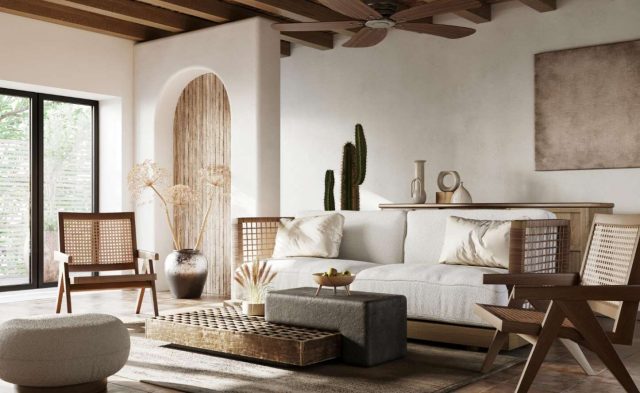Interior design usually prioritises aesthetics: from clean minimalist kitchens, to dazzling light-filled lounges, it’s all about the looks. However, it is possible to boost your mental health through your interior design: from establishing agency and control over your surroundings, to just grabbing a feather duster.
Whether you’re looking to redesign your own pad or looking for homes for sale in Grants Pass Oregon, here’s how to make the inside as great as the outside.
Tidiness
Yes, sorry, there’s no escaping this: can’t go redesigning your bedroom if it’s still covered in takeout cartons and yesterday’s coffee mugs.
Clutter and mess can be a double-edged sword. On one hand, it can encourage certain creatives to make unconventional mental connections in their work.
However, for most of us, it contributes to a sense of anxiety and chaos. A Princeton University study confirms this: they found that clutter makes it more difficult for a person to focus on a task.
Specifically, your visual cortex becomes overwhelmed by items not linked to the task at hand, making it more difficult to focus on an individual project.
Sunlight
Sunlight itself is a mood booster: organizing your room to maximize exposure to this revitalizing force is a fantastic way to start a redesign and help relax your mind.
Start off by evaluating what blocks light flowing into a room: do you have thick, heavy curtains? Even when wide open, these restrict light and add to a sense of enclosure, essentially bordering up the window.
Instead, look into other light control methods: shutters and blinds can be a stylish way to retain your privacy that also sits flush with the wall itself, minimizing the intrusion into the living space that you see with curtains.
Color
A lick of paint can make a world of difference. Color psychology sees that light, pastel tones can have a relaxing effect. Whilst primary red is associated with anxiety, pastel pink is a far more soothing color.
Colors that are highly saturated and less bright, such as bottle green, can feel energizing.
However, the true psychological impact of color is reliant on your own response to it – some people might find red threatening; others find it inspiring.
Typical responses to a color like orange can vary considerably: as it’s the closest color to sunlight, some respond positively to its inclusion in interior design. Its positive effects inspire desire, appetite, and zest.
And though some interior design ‘experts’ demand that you must balance out certain hues with others – it’s worth remembering that this is your space, and if you’re not thinking of moving or selling anytime soon, then it’s ok to prioritize what makes you happy.
The cumulative effect of all three-pointers is a positive feedback loop: if you find yourself not caring for your surroundings at all currently, then sometimes a small redesign can have you feeling proud and responsible for your own space.

Speaks from heart, always too passionate and driven by emotions. Spins the words with kindness & sharpness, intriguing your ever-inscrutable minds.


